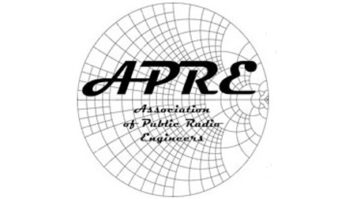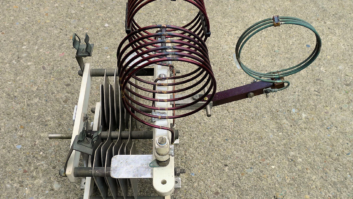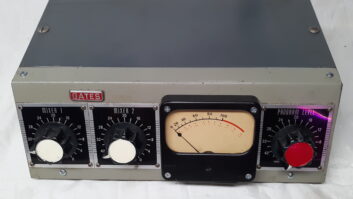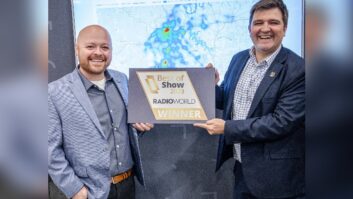Tired of Getting a Bad Rap for Dead Birds, Broadcasters Hope Research on Tower Lighting Provides Answers
WASHINGTON The U.S Fish and Wildlife Service has accelerated efforts to address bird kills at tower sites and is poised to begin research into the phenomenon.
The data could someday determine where radio stations locate their towers and how they light them. It also could necessitate modifications to existing tower sites.
Broadcasters have urged Congress to fund such research, to settle the question of whether broadcast towers play a role in bird deaths.
New tower siting guidelines issued by the U.S. Fish and Wildlife Service have the broadcast industry worried that some groups may use the voluntary guidelines as a means to make it even more difficult to receive the necessary permits to build new tower projects.
Birds fly into towers, guy wires
The FWS says the construction of thousands of new communication towers for broadcast and wireless technologies across the United States is putting birds, especially migrating songbirds, at a higher risk of death due to collisions with towers (RW, Oct. 13, 1999).
Avian researchers say they conservatively estimate 4 million to 5 million migrating songbirds are killed in the country each year in tower collisions, although the numbers could be as high as 40 million to 50 million. They say most fatalities occur at night during bad weather, when night-migrating songbirds are drawn instinctively to tower lights.
Tower Siting Guidelines Hike CostsEVERETT, Wash. At least one broadcaster says new tower siting guidelines from the U.S. Fish and Wildlife Service will affect radio and TV financially.
The voluntary guidelines, issued in response to avian mortality at communication tower sites, mean broadcasters will likely spend more time and money acquiring permits for new tower projects.
Andrew Skotdal, president of S-R Broadcasting Co., said his company has revised plans for an antenna upgrade project for KRKO(AM), Everett, Wash., out of respect for the tower siting guidelines. The broadcaster has worked for three years to secure construction permits to build an antenna farm in the Upper Snohomish River Valley just north of Seattle in anticipation of a power increase for the station.
“We went from having a series of guyed towers to self-supporting ones and reduced the height of the towers to address the issue,” Skotdal said.
KRKO’s original master plan proposed a total of eight antennas, all more than 400 feet tall, with a total of 196 guy wires. The revised plan calls for one tower over 400 feet tall and the other seven under 200 feet tall, all self-supported, Skotdal said.
The cost of the antenna project has more than tripled because of legal fees and the structural changes, Skotdal said.
“The guidelines are unrealistic. For example, they ask broadcasters to refrain from building towers near wetlands. Well, that’s contrary to AM broadcasting methods where you need low wet ground,” Skotdal said.
“Therefore you’re going to have these AM antenna farms near wetlands. That’s just natural with the physics of AM broadcasting and ground conductivity.”
Results of a hearing process with Snohomish County officials regarding the project’s approval were expected in July, Skotdal said.
— Randy J. Stine
FWS experts say a low cloud ceiling disrupts the songbirds’ ability to use the moon and stars as navigational tools. They crash into the towers, guy wires or ground and are killed.
Large bird kills at communication towers remain rare, experts say, but they do occur. For example, an estimated 10,000 Lapland Longspurs were killed in 1998 at a 420-foot television tower in Kansas during a snowstorm, according to the Fish and Wildlife Service. The largest bird kill ever recorded by the service was in 1974 at a communications tower in Eau Claire, Wis., where an estimated 30,000 birds died in a single night.
Al Manville, a bird-strike specialist in the Office of Migratory Bird Management, said the Fish and Wildlife Service is planning to conduct studies into why birds are drawn to tower lights and what can be done to prevent it.
Manville said Richland Tower is one of the companies interested in funding a multi-year study on bird behavior and tower lighting in Savannah, Ga. Another study has been proposed at a 600-foot television tower in Binghamton, N.Y.
“It all depends on the funding. It’s been a slow process. We’ve been promised some public funding and we’re hoping to have that matched by the communication tower industry,” Manville said.
Bill Evans, an ornithologist and former Cornell researcher, will oversee the Binghamton project, Manville said.
“We have permission from the FAA to modify the lighting at that tower during bad weather … even shutting off the lights for spans of 15 minutes. Those findings should be very beneficial.”
Rate and color
Tower lighting is the major focus of avian biologists’ research. Most researchers believe the issue centers on the flashing rate and lamp color of the strobes, Manville said.
“We know that birds are especially sensitive to the red spectrum and also see ultraviolet light. Our research shows white lights disrupt the migrating birds’ navigation system less than steady or flashing red lights,” Manville said.
Manville said Evans will use acoustic monitoring and ornithological radar to detect the migrating birds movement around the Binghamton tower.
Paul Kerlinger, a biological consultant and member of the Communication Tower Working Group, said Richland Tower is ready to contribute financially to research efforts. The CTWG consists of several federal agencies, including the FCC and FAA, avian researchers and private industry. The group was formed to coordinate research into tower strikes.
“(Richland Tower) wants the same thing we all do. The hardest part has been getting the different governmental agencies together to tackle the problem,” Kerlinger said.
“The problem is that right now there is no set criteria for how research is collected,” said Anthony Flores, vice president of operations for Richland Tower. “It’s such an ambiguous problem. And everyone’s opinion of what a significant bird-kill number should be is different.”
Flores said Richland Tower conducted its own research into avian mortality during the migration season in the spring of 2001 at three tower sites it owns near Sacramento, Calif.
“We hired biologists to search the area and they found fewer than a dozen dead birds during that time. That would seem an insignificant number to most,” Flores said.
Rebecca DeMoss, national environmental compliance director for American Tower, said avian mortality has the tower industry “in a stranglehold” with no science to support the claims of avian researchers.
“It’s important that the industry helps with research to find some resolution to the problem. The federal government also needs to act,” DeMoss said.
American Tower has proposed building a series of 199-foot monopole structures on federal forestland in Arizona to conduct a three-year study. DeMoss said she hopes construction will be complete in time for the spring 2003 migration.
Experts with the FWS believe the tower industry is violating the Migratory Bird Treaty Act of 1918, which protects certain species, by erecting communication towers that cause migrating songbird deaths.
“Anytime you are killing protected species by some means, in this case communication towers, you’re in violation of the law,” Manville said.
Manville said it’s conceivable that a tower company or broadcaster could be charged someday under the Migratory Bird Treaty Act and taken to court as a result of bird strikes on towers.
“Theoretically, whether you intentionally or accidentally kill a protected bird, you are in violation of the MBTA. It would be a drastic measure. I think it is better if we work with the tower industry to find solutions on how to prevent the bird strikes in the first place,” Manville said.
Possible prosecution raised
A broadcaster familiar with the avian mortality issue said, “Some broadcasters fear the U.S. Fish and Wildlife Service is looking for a real good test case to see if they can prosecute this.”
Manville said one new development that could have “major ramifications” on the tower industry is an agreement that Denver-based Xcel Energy signed with the U.S. Department of Justice in April. Xcel Energy, an electric and gas utility with operations in 12 states, agreed to fix faulty electric transmission lines that are likely to cause death or significant injury to birds by electrocution.
“The agreement ensures that Xcel is in compliance with the Migratory Bird Treaty Act,” Manville said. “It’s a cooperative solution rather than litigation that goes on forever.”
Under the deal, Xcel Energy is protected from criminal prosecution by the Justice Department’s Environment and Natural Resources Division while it works on its avian protection efforts, Manville said.
“It protects (Xcel) from a fate similar to that of Moon Lake Electric Association. We hope the tower industry will look favorably upon any future agreements,” he said.
Moon Lake, a Utah-based power cooperative, was prosecuted in 1999. Moon Lake pleaded guilty to violating federal bird protection statutes and was heavily fined, Manville said.
Ted Hammerman, a communications lawyer specializing in tower issues, said the enforcement division of the FWS can prosecute in cases when it believes a protected species of wildlife is being injured or killed under any circumstance.
His advice to broadcasters is to “show reasonable good faith” in helping to developing warning tactics to reduce bird strikes.
The Fish and Wildlife Service issued voluntary tower siting guidelines last year in a move aimed at reducing bird strikes. It recommended new communication towers be no more than 199 feet above ground level using monopole or lattice construction techniques that do not require guy wires. Such towers do not require lighting, unless within 3.8 miles of airports, according to the guidelines.
The guidelines ask communication companies to collocate equipment on existing towers whenever possible. They also urge the use of white strobe lights when permitted by the FAA.
The broadcast industry is concerned conservationists will use the guidelines to make tower siting in certain parts of the country even more difficult at a time when more local jurisdictions already are denying access and barring towers completely (see sidebar).
The rapid expansion of communication towers, especially wireless cell sites, has made more communities leery, said Jim Fryer, president of Fryer’s TowerSource, a publisher of tower resources guides and market analysis. TowerSource estimates there are 60,000 lighted communications tower in the United States.
Fred Baumgartner is chairman of the National Antenna Consortium, a group formed to lobby for uniform zoning standards to preempt what it considers overly restrictive local jurisdictions. He said the guidelines will add to the confusion of tower construction.
“Here is yet another concern people can use when it comes to zoning and permit standards for the tower industry. Yet, there is really no way to measure the impact upon birds.”
Baumgartner said the NAC will support any effort to make towers safer for wildlife, including changing the flashing rates of lighting on towers. However, he believes the issue is overstated.
“I think you have the opinion of a few bird specialists without any research that could stand up to scientific rigors,” Baumgartner said.
Manville said Fish and Wildlife Service personnel met with senior legal advisors from the FCC in June to brief them on the tower siting guidelines.
“We are at least opening lines of communication, which we have lacked in the past. They seemed legitimately concerned with avian mortality and how it could impact broadcasters,” Manville said.
In a letter to congressional leaders in June addressing avian mortality, NAB President Eddie Fritts wrote, “We urge you to support the U.S. Fish and Wildlife Services’ efforts to secure federal funding for this scientific endeavor. … We are optimistic that a cost-effective remedy to this problem will be found with this basic research.”












